OTTAWA PHOTOGRAPHERS/ STUDIO/ ON LOCATION/ FASHION / MODELLING / CHILDREN FAIRY PORTRAIT PHOTOGRAPHY / JEFF RYAN PHOTOGRAPHER / KANATA/ STITTSVILLE/ MANOTICK/ NEPEAN/ ORLEANS
OTTAWA CHILDRENS FAIRY DAY PORTRAIT PHOTOGRAPHER / OTTAWA FAIRIES / PROFESSIONAL PHOTOGRAPHY JEFF RYAN / PORTFOLIO FASHION MODELLING / BALLET DANCE / FAIRY DRESS COSTUMES WINGS / PHOTO RESTORATION REPAIR/HOLLYWOOD STYLE PORTRAITURE
MARCH 2022
SOFTBOXES & LIGHT MODIFIERS “CHAPTER TWO”
Hello Ladies & Gentlemen:
It would be my pleasure to continue last months discussion regarding the characteristics of soft boxes and light modifiers on your behalf. As mentioned previously, I have been using several designs of sophisticated soft boxes over many years of professional photography.
*On another note, people need not be committed to purchasing expensive light modifiers if they have the ability to create their own. I will discuss this shortly in this featured article as well. First though, I am going to address another professional soft box I own and relate it’s characteristics to you. Please Enjoy!
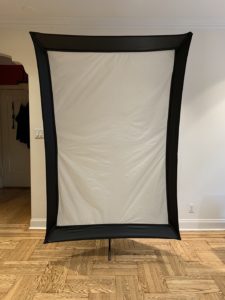
Large Soft Box
A box that is characterized as being large typically ranges in the size of at least 36 x 48 inches. Boxes of this design are frequently used to light larger sets and are also good for producing a more even light when doing full length portraits of people or products. Larger boxes measuring 4 x 6 feet or more for instance will produce even better quality coverage for taller/larger subjects. The idea behind using boxes of this size is to ensure very little light fall off from the top to the bottom of the subject, plus a more even coverage. They also have the ability to create beautiful wrap around lighting effects on your subject. Often, fill light devices are used minimally with these large wrap around boxes which create excellent highlights and transitional edge transfer shadows. They can also be used as efficient studio fill lights, opening up darker shadowed areas very effectively.
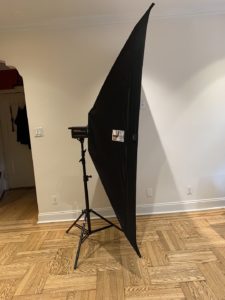
As a studio fill light, it would be placed in behind the photographer and roughly 7 feet or higher, elevated above the floor area. You would want the light from this this box to be unobstructed so it has the ability to be very broad in its coverage. You should most definitely have a variable power studio flash attached to it with at least 1000 watt seconds of power giving you the option of using any F-stop on your camera you choose. Monolights with variable power control are perfect for this application, and they often produce 1500 watt seconds of power. Studio lights used in this application which have less power will unfortunately not always deliver the amount of power required to access smaller F-stops such as F11 or F16 for example which forces the photographer to increase the ISO setting on the camera for additional sensitivity to light. This is not a good path to follow. Increasing the ISO for either film or digital photographers means that more grain/noise will be introduced into the imagery. Even with advanced noise suppression systems in the digital realm, grain-(noise), will still be a nuisance to deal with. Lowering the ISO will minimize grain effects in photography producing a superior image which I highly recommend.
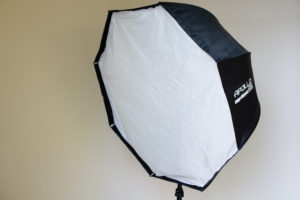
I often use a large box manufactured by Chimera systems. Other companies such as Godox also manufacture large items to consider if necessary. I purchased this box second hand and on a further note, it is a product made of very good quality material, able to stand up to excessive use over the years. Soft boxes have the ability to “trap light” and become a very directional light source particularly if they can be fitted with barn doors. Barn doors are extensions which fit onto the front of the box. The actual white fabric of the front of the box now becomes recessed when utilizing these doors. They are commonly made out of similar fabric to the soft box itself and velcroed onto the front and sides of the box. They prevent light from spilling out the sides of the box contaminating other areas of the set where light should not be included.
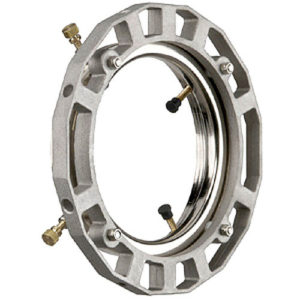
A SPEED RING FEATURED ABOVE
An additional often overlooked feature of soft boxes are “Speed Rings”. A speed ring is a device which attaches to the back centre of the box. Then, your main lighting unit affixes itself to the speed ring. The purpose of the ring is to rotate the soft box to either a horizontal or vertical position depending on what your photographing.
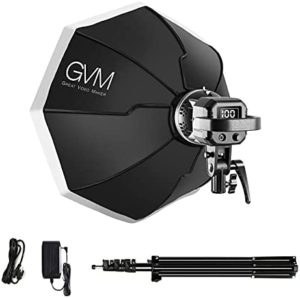
Vertical subjects will more than likely be photographed with the box in a vertical position including people or otherwise and naturally, horizontal objects photographed horizontally. This feature can be very handy when varying your set design customizing the light to accommodate your subjects. At the time of this writing-(March 2022), speed rings have come down in price over the years and are valued at roughly $30-$50. on average depending upon the manufacturer. For this inexpensive fee, they could be a welcome addition to your lighting system giving you more creativity and flexible control over your light source.
PANEL LIGHTING SYSTEM
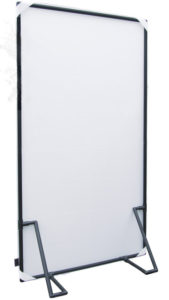
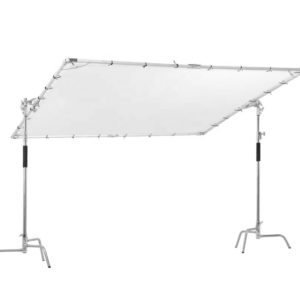
There are additional methods of controlling light be it inside a studio or an outdoor environment. I am referring to light panels. These as well as soft boxes, can be purchased in a retail outlet or you have the luxury of producing them yourself for a fraction of the cost of a store bought item. I have made my own approximately 25 years ago out of PVC or ABS tubing. This product can be purchased in large outlets such as plumbing stores for example, and the diameter of the tube varies in width itself. I started with a medium sized diameter that was rigid enough to withhold fabrics I attached to it once it was shaped in the design I created.
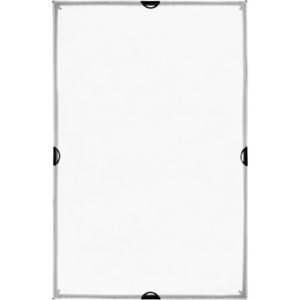
In a general sense, these shapes/designs will either be square or vertical and you can cut the PVC to various lengths. A simple hack saw, a vice, and pvc glue are required plus you will need “90 degree elbows” also found in the same plumbing department which will act as the corners of your frame. Following this, a trip to a fabric store or similar outlet to purchase white fabric or rip stop nylon will start you on a new journey of light control. When purchasing fabric, try to purchase as pure a “white” as you can. Many fabrics called white are not white but often a pale yellow, cream tone. This shift in colour from the fabric will slightly alter the colour of your finished image. Fabrics/Rip Stop Nylon should be able to transmit light efficiently without being so dense a fabric that light has a difficult time flowing through it. Use your best judgment by holding the fabric up to the lights in the store and viewing exactly how dense each fabric is. You should not be able to see the ceiling lights clearly, only the blur of their light showing through the fabric. Also inquire if the store carries both translucent and reflective fabric available for purchase. This is the beauty of these panel designs being able to accommodate both types of fabrics when a quick change is needed. You might want light to bounce off of the reflective side creating a harder light source on your model or conversely, a softer light being transmitted through the panel when using translucent fabric.
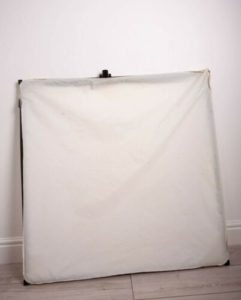
My panels are sized at 3 x 6 feet, 3 feet square and 6 x 6 feet. The different sizes of panels provide me with great flexibility when lighting people or products. I have frequently placed “black rip stop nylon” on the bottom half of the larger panels to reduce the overall size of light emitting from the panel if required. Again, this provides me with a considerable amount of light control. Panel fabric colours designed to create a warming effect being gold in colour are also available. The picture below references translucent, black, gold and silver fabrics.
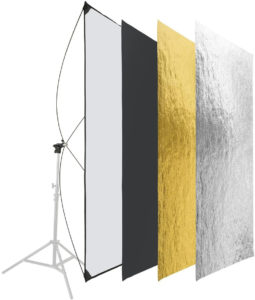
The costs of these items-(soft boxes or panels) manufactured by recognized lighting companies will always be more in expense than your overall purchase in a hardware/plumbing outlet. I do not have current pricing on those outlets however common sense dictates a reduction in price when you produce items on your own as opposed to store bought. I mention a couple of companies below simply to provide you with an idea as to what you would be expected to pay should you elect to purchase similar items in a professional camera store.
– Photoflex $379. USA dollars, Westcott Scrim Jim $129. USA dollars 6 x 6 feet.
*It should be said that I have mentioned only two companies above producing these designs, however they are very reputable firms which professional photographers have utilized with great satisfaction over many years. Other companies such as Manfrotto, Godox, Aputure also produce a variety of light modifiers. Do your homework based upon my advice above. Either way, you will start producing a more controllable light source which will broaden your photographic vision giving you a higher success rate of light control.
Thank you for being here and good luck with your new venture!
With My Good Wishes Extended,
Jeff Ryan Photography/Ryan Studio
www.jeffryan-photography.com
